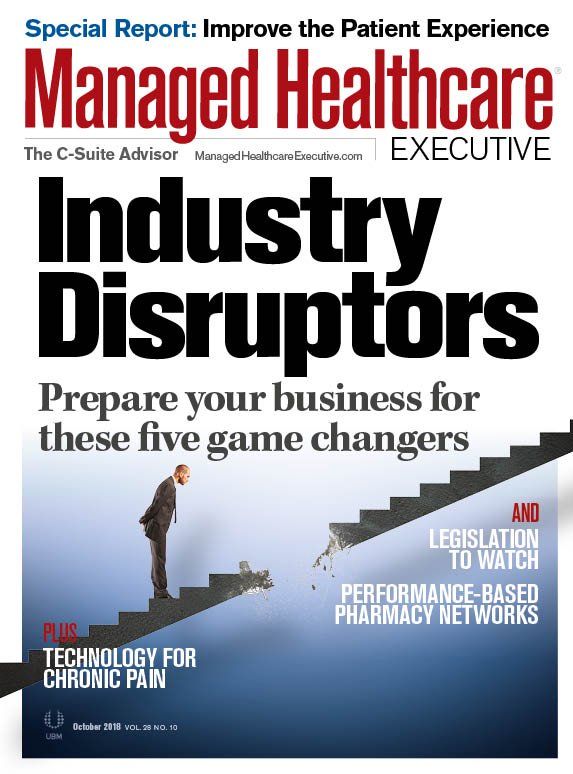What Health Orgs Should Do as Cancer Treatment Costs Increase
While promising new options keep entering the scene, high costs can be problematic to patients and healthcare organizations. Here are some ways to cope.
Tan

Progress seldom comes without cost, and that's certainly the case for treatment of lymphoma and other cancers. While promising new options keep entering the scene, high costs can be problematic to patients and their families.
Lack of upfront information is part of the challenge, according to Alan Tan, MD, clinical research medical director, medical oncologist and hematologist for Cancer Treatment Centers of America in Phoenix. In general, oncologists often discuss with patients any potential toxicity of their cancer treatment, he says, but only 27% of cancer patients report having had discussions with their oncologist about financial realities, according to the National Cancer Institute.
"Financial toxicity can lead patients not only into debt, depleted savings, and even bankruptcy, but also skipped medication doses and consequently shortened survival," he says. Tan notes that in hematologic malignancies, many of the standard treatment regimens can run well over $100,000 per year with a single once-a-day pill that continues indefinitely. Many trials show incremental benefit with combination therapies as well, which tend to be very expensive.
He adds that with developments such as CAR T-cell therapy, which has gained attention for unprecedented response rates, costs for treatment are even greater, with price tags such as $373,000 and $475,000.
"These prices are only for the cost of extracting the patient’s T cells and engineering them to produce the CARs on the surface of the cells, and infusing them back into the patient," he says. “When one includes hospital stays, supportive care for potential toxicity, and physician visits including consultants, the total cost can exceed more than a million dollars per patient.”
Added complexity
Tan says that oncology is a difficult topic with respect to cost because of the life-and-death implications and the cost of innovation. That noted, efforts to promote understanding and contain costs where possible are advisable. It’s important to have transparency around cost benefits of treatments, adherence to the best evidence, and a willingness to explore ways to link outcome and costs such as through the oncology medical home or value-based approaches to pharmacy," he says.
He also encourages careful consideration of treatment options.
"For very expensive treatments such as CAR T-cell therapy, we should only be offering this to the sickest patients with the fewest options," Tan says. "Patients with lymphoma overall do well with standard chemotherapy and may well be cured."
Manish J. Dave, MD, who specializes in hematology and oncology at CareMount Medical in Mount Kisco, New York, also notes that some treatments can be effective even though they are not at the high end of the cost scale.
“Rituximab is a commonly used treatment for many blood cancers," he says. "Recent studies have shown that the medication’s cost per quality-adjusted life year has been falling within standard thresholds for cost-effectiveness."
Resources that help
One way to manage appropriate treatment selection is the use of novel clinical endpoints and highly accurate, standardized diagnostic tests, according to Charles Sang, senior vice president at Adaptive Diagnostics in Seattle. He encourages healthcare executives to embrace standardized molecular diagnostic tests.
“There are numerous barriers to coverage of advanced diagnostic technologies, which results in limited adoption in the practice of medicine in ways that can potentially improve care and provide mechanisms for cost containment,” he says. “Diagnostics can play a role in leading to the identification of more effective treatments, as well as more cost-effective use of those treatments.”
Tan points to the need to be able to identify high-risk groups of patients that biologically are sure to relapse and expose them to CAR T-cell therapy earlier.
“We need biomarkers that best select patients that have the highest likelihood of responding to CAR T-cell therapy,” he says. “It would be a shame to spend over a million dollars for a treatment that did not work at all.”
He also advocates a value-based pricing and use model.
“Perhaps a million dollars is not that steep of a price if you can cure a patient with a one-time treatment,” he says.
Greater levels of competition should provide some relief, he predicts.
“Encourage competition,” he says. “CAR T-cell pricing will surely go down as more competitors come to market. Stimulate generic and biosimilar market competition.”
The bottom line is that a patient's well-being comes first.
"A cancer patient’s financial constraints and/or socioeconomic status should not compromise their health, longevity, or quality of life due to symptoms from cancer," Dave says. “We recommend a multi-disciplinary team of medical oncologists, pathologists, radiologists, and other clinicians review complicated cases to provide the best care possible to patients. We encourage patients to participate in clinical trials, which offer new, often groundbreaking treatments."

Private Equity in Healthcare: Colonoscopy Prices Soar While Care Remains the Same
July 11th 2025Private equity acquisitions have increased rapidly across all aspects of healthcare, with gastroenterology practices experiencing the highest share. In the U.S., approximately 13% of gastroenterologists work in practices owned by private equity groups.
Read More
Prevention Could Cut Global Cancer Deaths in Half
June 30th 2025According to the latest edition of The Cancer Atlas, lower-income nations are experiencing a rise in lung, colorectal and breast cancer incidence due to increasing adoption of behaviors associated with economic development—such as tobacco use, poor nutrition and physical inactivity.
Read More
Using the 'Pathway' Approach to Shorten the Time Between Cancer Diagnosis and Treatment
November 16th 2022In this episode of Tuning In to the C-Suite, Briana Contreras, editor with Managed Healthcare Executive spoke with Dr. Yuri Fesko, oncologist and vice president of Medical Affairs at Quest Diagnostics. In the conversation, Dr. Fesko addressed the ongoing issue of long gaps of times between receiving a diagnosis for a type of cancer and finally getting the treatment for it. Dr. Fesko shared the benefits a number of sectors receive when treating patients sooner and the steps to get there.
Listen
Attacking PRPS Enzymes Offers Hope for Treating Fast-Growing Myc-Driven Lymphomas
June 10th 2025Researchers found that altering key enzymes involved in redox balance could disrupt the metabolism of Myc-driven lymphomas, which offers a potential new strategy to treat aggressive cancers.
Read More